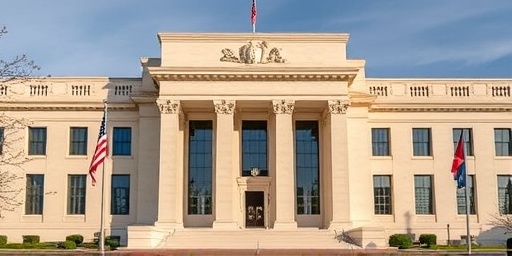In a pivotal shift for the U.S. economy, the Federal Reserve has signaled a likely rate cut in December as recent CPI data reveals inflation easing faster than anticipated. This development, announced following the latest Consumer Price Index report, has ignited optimism across financial markets, propelling the stock market to new heights with the S&P 500 surging 1.2% in immediate trading.
CPI Report Reveals Unexpected Dip in Inflation Pressures
The Bureau of Labor Statistics released the October CPI figures on Wednesday, showing a headline inflation rate of 3.2% year-over-year, down from 3.7% in September and markedly softer than the 3.4% economists had forecasted. Core CPI, which excludes volatile food and energy prices, clocked in at 3.1%, the lowest since early 2021. This deceleration in inflation metrics underscores a cooling economy where price pressures are finally abating after a multi-year surge triggered by pandemic disruptions and supply chain snarls.
Key components driving this relief include a 0.4% monthly decline in energy prices, with gasoline costs dropping 5.1% amid stable global oil supplies. Shelter costs, a persistent thorn in the inflation battle, rose at a subdued 0.3% pace, the slowest in over two years. Food inflation, while still elevated at 2.6%, showed signs of stabilization as grocery prices edged up only 0.1%. Economists attribute these trends to moderating wage growth and improved supply efficiencies, signaling that the Federal Reserve‘s aggressive rate-hiking campaign—totaling 525 basis points since March 2022—may be bearing fruit.
“The CPI data paints a picture of an economy transitioning from overheating to equilibrium,” said Dr. Elena Ramirez, chief economist at the Institute for Economic Studies. “This isn’t just a blip; it’s evidence that monetary policy is working, though we must remain vigilant against any rebound in core services inflation.” Her assessment aligns with broader consensus, as the report’s details surpassed even optimistic projections, reducing fears of a stagflationary spiral.
Fed Chair Powell’s Remarks Fuel Rate Cut Speculation
Responding to the CPI release during a press briefing, Federal Reserve Chair Jerome Powell emphasized the board’s data-dependent approach, hinting strongly at a December rate cut. “With inflation moving sustainably toward our 2% target, we have room to ease policy without derailing progress,” Powell stated. He noted that the current federal funds rate, held steady at 5.25-5.50% since July, could see a 25-basis-point reduction as early as the December 17-18 meeting, marking the first cut in over three years.
This dovish tone contrasts with the Fed’s hawkish stance earlier in 2024, when officials projected fewer cuts amid sticky inflation. Updated dot plots from the September FOMC meeting already suggested two cuts by year-end, but the latest CPI has accelerated expectations for action. Fed Governor Lisa Cook echoed Powell’s optimism, telling reporters, “The softening inflation environment allows us to support employment without reigniting price pressures.” Market futures now price in a 92% probability of a December rate cut, up from 75% pre-CPI.
Behind the scenes, internal Fed memos leaked to financial outlets reveal divisions narrowing, with only two regional presidents dissenting on the pace of easing. This consensus-building reflects a delicate balance: rewarding inflation progress while monitoring labor market resilience, where unemployment remains low at 4.1%.
Stock Market Rally Ignites on Fed’s Dovish Pivot
The stock market reacted swiftly and bullishly to the Federal Reserve‘s signals, with Wall Street indices posting their strongest gains in weeks. The S&P 500 climbed 1.2% to close at 5,800, led by technology and consumer discretionary sectors that stand to benefit from lower borrowing costs. The Nasdaq Composite, heavy on growth stocks, jumped 1.5%, while the Dow Jones Industrial Average added 0.8% or 350 points.
Investor enthusiasm stemmed from the prospect of a rate cut alleviating pressure on corporate earnings, particularly for interest-sensitive industries like real estate and autos. Bank stocks, however, dipped slightly as net interest margins face compression. “This is a textbook stock market response to Fed easing—risk assets thrive when the punchbowl returns,” observed Jim Cramer on CNBC, highlighting how the rally erased recent losses tied to election uncertainties.
Broader market indicators reinforced the positive sentiment: the 10-year Treasury yield fell to 4.05%, its lowest in months, while the dollar index weakened 0.7% against major currencies. Volatility, as measured by the VIX, dropped below 15, signaling reduced investor anxiety. Sector-wise, renewable energy firms like NextEra Energy soared 3.2% on expectations of cheaper capital for green projects, underscoring how Federal Reserve policy ripples through thematic investments.
- S&P 500 Top Gainers: Apple Inc. (+2.1%), Nvidia Corp. (+2.8%), Amazon.com Inc. (+1.9%)
- Laggards: JPMorgan Chase (-0.5%), Goldman Sachs (-0.3%)
Analysts project this momentum could extend into 2025, with Goldman Sachs revising its year-end S&P target to 6,100, citing sustained rate cut cycles as a tailwind.
Economic Implications: Balancing Growth and Price Stability
Beyond immediate stock market euphoria, the Federal Reserve‘s hinted rate cut carries profound implications for households and businesses navigating a post-inflation landscape. Mortgage rates, hovering around 6.8%, could dip toward 6.2% by mid-2025, boosting home sales that have languished at 15-year lows. Auto loans and credit card rates, burdened by high inflation eras, may ease, providing relief to consumers whose savings rates have eroded.
For businesses, lower rates signal cheaper access to capital, potentially spurring investment in expansion and hiring. Small and medium enterprises, which comprise 99% of U.S. firms, stand to gain most, as per a recent NFIB survey showing 45% citing high interest as a top concern. Yet, risks linger: if rate cuts prove premature, reinflation could force a policy reversal, echoing the 1970s Volcker-era hikes.
Globally, the U.S. pivot influences emerging markets, where dollar strength has strained debt servicing. Countries like Brazil and India, battling imported inflation, may find breathing room as a weaker dollar eases pressures. “The Fed’s actions set the tone for global liquidity,” noted IMF Chief Economist Pierre-Olivier Gourinchas, warning of synchronized easing cycles ahead.
Domestic data supports cautious optimism. The latest ISM Manufacturing Index rose to 48.5, indicating stabilization, while nonfarm payrolls added 254,000 jobs in October, exceeding forecasts. These metrics suggest the Federal Reserve can pivot without tipping into recession, though regional disparities—such as manufacturing hubs in the Midwest—warrant monitoring.
Outlook: What Investors and Policymakers Should Watch Next
Looking ahead, the path to further rate cuts hinges on upcoming economic releases, starting with November’s CPI on December 11, just days before the FOMC decision. Policymakers will scrutinize wage data from the Employment Cost Index and retail sales to gauge consumer spending resilience amid easing inflation. Any uptick in core services inflation could temper expectations, potentially delaying cuts into 2025.
Geopolitical factors, including U.S. election outcomes and Middle East tensions, add layers of uncertainty. A Trump administration might push for fiscal stimulus, complicating the Federal Reserve‘s mandate, while ongoing Ukraine aid could sustain energy volatility. Investors are advised to diversify, with experts like BlackRock’s Rick Rieder recommending a tilt toward equities and intermediate bonds.
In the longer term, sustained rate cuts could usher in a soft landing, where growth averages 2.5% without reigniting inflation. Projections from the Congressional Budget Office envision CPI stabilizing at 2.3% by 2026, supporting a virtuous cycle of investment and consumption. As the stock market digests these shifts, the focus remains on the Fed’s December meeting, where clarity on the easing trajectory will shape economic narratives for the new year.
The Federal Reserve‘s delicate dance continues, balancing the triumphs over inflation with the imperatives of sustainable growth. For now, markets are betting on progress, but vigilance is key in this evolving story.









